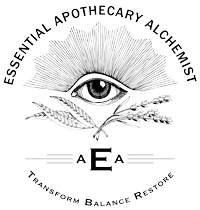I have always felt that humans are too adaptable. We adapt so easily that we become indifferent to a multitude of things that may possibly lead to our demise. Humans tend to put so many aspects of their lives into the back of their minds to revisit later, along with a million other things they choose to ignore.
I would like to help you unearth one of those buried items, so that you, as a consumer, can now make a more conscious choice about what you want to do about your consumption of products that use plastic containers.
Plastic is cheap to produce, it is light weight, it is easy to manipulate into an infinite range of colors and shapes, and it is toxic. Because of its toxicity, it is linked with severe health effects such as endocrine disruption (it mimics estrogen), reproductive issues, decreased sex hormones, impaired immunity, cancer, birth defects, insulin resistance, liver damage …

Plastic is not inert, and the process of chemicals moving from a container into your product is called leaching or migration. If your product is in contact with plastic, the chemicals in the plastic are leaching into your product. And, anything you put on your skin absorbs into your body the same as if was ingested. If this wasn’t enough, the plastic that ends up in the landfills, eventually ends up in our water. There is an enormous quantity of plastics produced worldwide. Over 300 million metric tons of plastics are produced annually. Nearly half of this number accounts for the disposable containers that are discarded within a year of purchase.
Pervasive use of phthalates (a common substance used in plastic manufacturing) in the containers used for our personal care products has resulted in widespread exposure. Dermal exposure is a significant route for this toxin to enter delicate physical systems.
A 2011 study conducted by the Environmental Health Perspectives states, “Almost all commercially available plastic products we sampled—independent of the type of resin, product, or retail source—leached chemicals having reliably detectable EA (Chemicals that mimic or antagonize the actions of naturally occurring estrogens are defined as having estrogenic activity or EA), including those advertised as BPA free. In some cases, BPA-free products released chemicals having more EA than did BPA-containing products.” I would assume from reading this study and its findings, all products stored in plastic containers are NOT safe, if you don’t want to consume plastic.
Let’s take a deeper look at the ingredients in most common plastic containers.
Phthalic acid: a common ingredient in most plastic and has been found to be very toxic. It is hazardous when it comes into contact with the skin or inhaled.
Phthalic acid acts as a corrosive to our tissues. This chemical causes inflammation and can cause blistering on the skin.
Phthalic acid has been shown to cause skin destruction or dermatitis. Polyethylene Terephthalate can leach antimony (metal) which is used during its manufacturing. The longer the substance is exposed to the PET container, the higher the levels of antimony were found. Temperature, sunlight exposure, and pH levels also contribute to the leaching effect. Bromine has also been found in PET bottles. Bromine is a known central nervous system depressant.
We surely can’t avoid all plastic these days, but we can as consumers be more mindful of purchasing products that value their ingredients enough to put them in glass bottles and jars. It can take anywhere from 100 to 1000 years for plastic to degrade. Studies have also shown that up to a million sea creatures are being killed every year from plastic and plastic contamination.
This conscious consumption will also keep these toxins out of our landfills, out of our oceans, and out of our bodies. EAA uses a high quality glass that will not leach into the product.
https://www.ncbi.nlm.nih.gov/pmc/articles/PMC3299092/
https://www.webmd.com/food-recipes/features/cookware-plastics-shoppers-guide-to-food-safety#1
https://www.ncbi.nlm.nih.gov/pmc/articles/PMC3791860/
https://www.ncbi.nlm.nih.gov/pmc/articles/PMC3222987/

Back to BLOG